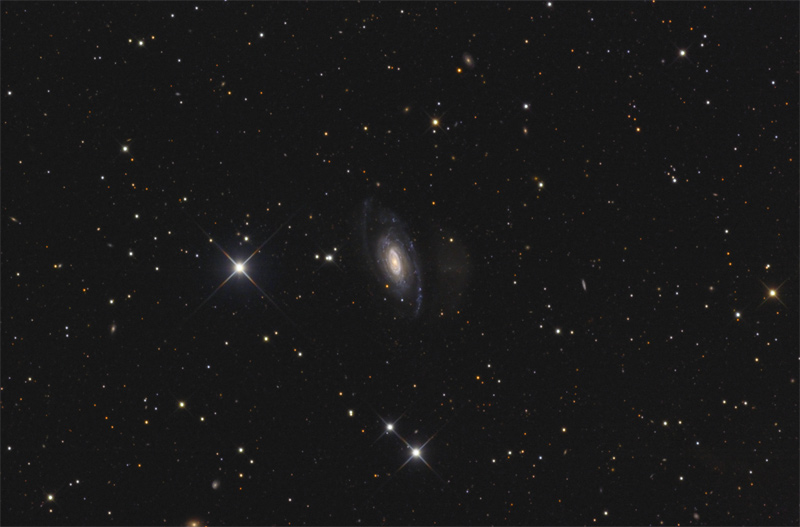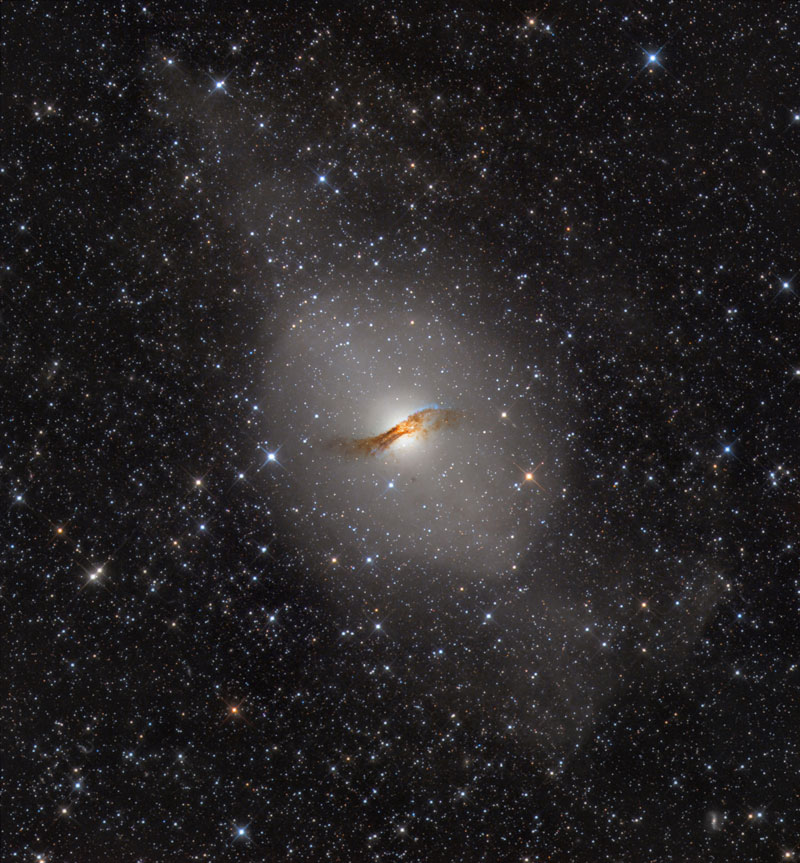Page 1 of 3
Found Images: 2019 October
Posted: Tue Oct 01, 2019 3:10 pm
by bystander
Have you seen a great image or video somewhere that you think would make a great APOD? Nominate it for APOD! Please post as much information here as you have about the image/video with a link to any source(s) for it you know of here, and the editors will take a look.
When posting the image itself, please do not post anything larger than a thumbnail here; please honor the copyright holder's copyright.
Please keep hotlinked images under 400K.
Thank you!
<< Previously
Re: Found Images: 2019 October
Posted: Wed Oct 02, 2019 9:41 am
by starsurfer
North America Nebula (NGC 7000)
http://www.capella-observatory.com/Imag ... atWall.htm
Copyright: Josef Pöpsel, Stefan Binnewies and Frank Sackenheim
Re: Found Images: 2019 October
Posted: Wed Oct 02, 2019 9:43 am
by starsurfer
Tarantula Nebula (NGC 2070)
http://cosmicphotos.com/gallery/image.p ... lbum_id=11
Copyright: Jason Jennings
Re: Found Images: 2019 October
Posted: Wed Oct 02, 2019 9:46 am
by starsurfer
Re: Found Images: 2019 October
Posted: Wed Oct 02, 2019 9:47 am
by starsurfer
Re: Found Images: 2019 October
Posted: Wed Oct 02, 2019 9:49 am
by starsurfer
Shapley 3
http://www.chart32.de/index.php/component/k2/item/315
Copyright: CHART32
Processing: Johannes Schedler
Re: Found Images: 2019 October
Posted: Wed Oct 02, 2019 9:50 am
by starsurfer
IC 4642
http://www.chart32.de/index.php/component/k2/item/314
Copyright: CHART32
Processing: Johannes Schedler
Re: Found Images: 2019 October
Posted: Wed Oct 02, 2019 9:52 am
by starsurfer
ESO: Once in a Blue Comet (C/2016 R2 (PANSTARRS))
Posted: Mon Oct 07, 2019 3:34 pm
by bystander
Once in a Blue Comet
ESO Picture of the Week | 2019 Oct 07
This image features a comet located in the
outer reaches of the Solar System: comet
C/2016 R2 (PANSTARRS). As its name suggests, the comet was discovered in 2016 by the Pan-STARRS telescopes in Hawai’i. The new image seen here was captured by a project based at ESO’s
Paranal Observatory in Chile named the Search for habitable Planets EClipsing ULtra-cOOl Stars — or
SPECULOOS for short.
Comets are balls of dust, ice, gas and rock. When they pass close to the Sun, their ice warms up, turns to gas, and escapes in a process called “
outgassing”. This process forms fuzzy envelopes around the comets’ nucleus, called comas, and distinctive tails. Observations from
SPECULOOS show that the tail of C/2016 R2 (PANSTARRS) changes dramatically across a single night, making for a dynamic set of images. The image shown here, and accompanying frames in the time-lapse movie, comprise observations taken on 18 January 2018 during the test phase of SPECULOOS’s Callisto telescope, and were taken when the comet was 2.85 AU from the Sun (1 AU being the Earth-Sun distance) and travelling inwards.
This comet is particularly exciting because of the rare compounds and molecules that scientists have detected in its coma: carbon monoxide and nitrogen ions. These compounds give the comet distinctive blue
emission lines — so much so that it is nicknamed “the blue comet”. This shy comet only orbits the Sun once every 20 000 years, its most recent approach being in May 2018. This image was taken over a period of time as the telescope tracked the comet’s motion; the bright streaks of light in the background are faraway stars, but the comet and its gaseous coma are all in focus, a testament to the tracking power of SPECULOOS.
HEIC: A Spiral in Profile (NGC 3717)
Posted: Mon Oct 07, 2019 3:43 pm
by bystander
A Spiral in Profile
ESA Hubble Picture of the Week | 2019 Oct 07
The NASA/ESA Hubble Space Telescope sees
galaxies of all shapes, sizes, brightnesses, and orientations in the cosmos. Sometimes, the telescope gazes at a galaxy oriented sideways — as shown here. The
spiral galaxy featured in this Picture of the Week is called
NGC 3717, and it is located about 60 million light-years away in the constellation of
Hydra (
The Sea Serpent).
Seeing a spiral almost in profile, as Hubble has here, can provide a vivid sense of its three-dimensional shape. Through most of their expanse, spiral galaxies are shaped like a thin pancake. At their cores, though, they have bright, spherical, star-filled bulges that extend above and below this disc, giving these galaxies a shape somewhat like that of a
flying saucer when they are seen edgeon.
NGC 3717 is not captured perfectly edge-on in this image; the nearer part of the galaxy is tilted ever so slightly down, and the far side tilted up. This angle affords a view across the disc and the central bulge (of which only one side is visible).
Re: Found Images: 2019 October
Posted: Tue Oct 08, 2019 1:16 pm
by starsurfer
NGC 7531
http://www.astrophoton.com/NGC7531.htm
Copyright: CEDIC
Processing: Markus Blauensteiner
Re: Found Images: 2019 October
Posted: Wed Oct 09, 2019 1:10 pm
by starsurfer
G70.5+1.9
http://outters.fr/wp/?p=8298
Copyright: Nicolas Outters
Re: Found Images: 2019 October
Posted: Wed Oct 09, 2019 1:14 pm
by starsurfer
Westerlund 1, vBe 1 and Sandqvist 191
https://www.martinpughastrophotography. ... esterlund1
Copyright: Martin Pugh
Sandqvist 191 is the dark nebula in the middle and vBe 1 is the emission nebula.
Re: Found Images: 2019 October
Posted: Wed Oct 09, 2019 1:17 pm
by starsurfer
AAS: Grasping at Tilted Planets’ Atmospheres
Posted: Wed Oct 09, 2019 5:10 pm
by bystander
Grasping at Tilted Planets’ Atmospheres
AAS Nova Featured Image | 2019 Oct 07
Susanna Kohler wrote:
How does tilting a planet affect its ability to hold on to its atmosphere in the face of intense stellar radiation? The above images are from a series of numerical simulations run by a team of scientists led by Chuanfei Dong (Princeton University), which explore the role of magnetic obliquity — the tilt of the planet’s magnetic field — in regulating the loss of ions from an exoplanet’s atmosphere. In particular, Dong and collaborators modeled Earth-like planets in the habitable zones of two different host stars: a Sun-like G dwarf (top row) and a TRAPPIST-1-like M dwarf (bottom row). The simulation frames above show the ion loss from these two planets with four different tilts: 0°, 45°, 90°, and 135° (columns from left to right). While obliquity doesn’t much affect mass loss for a planet around a Sun-like star, the planet around the M-dwarf loses twice as much mass when its obliquity is oriented at 90° than it does when it’s aligned at 0° — which could matter for such a planet’s potential habitability! For more information on the authors’ conclusions, check out the article below.
Role of Planetary Obliquity in Regulating Atmospheric Escape: G-dwarf versus
M-dwarf Earth-like Exoplanets ~ Chuanfei Dong, Zhenguang Huang, Manasvi Lingam
Re: Found Images: 2019 October
Posted: Sat Oct 12, 2019 10:41 am
by starsurfer
B147 and LDN 856
http://www.capella-observatory.com/Imag ... LDN856.htm
Copyright: Josef Pöpsel, Stefan Binnewies and Frank Sackenheim
Re: Found Images: 2019 October
Posted: Sat Oct 12, 2019 9:07 pm
by barretosmed
TMoon during the day
Best details:
https://www.astrobin.com/full/59vycf/C/ ... real=&mod=
EQUIPMENTS:
ZWO ASI 1600MC COLED
Esprit 150mm
Baader L Filter
Location: Sao Paulo - SP - Brazil
10/05/2019
Processing and Capture:
Software: Photoshop CS6, SharpCap V3.0 Sharcap
Copyright: Fernando Oliveira de Menezes
Re: Found Images: 2019 October
Posted: Sun Oct 13, 2019 12:57 pm
by starsurfer
NGC 1910, NGC 1918 and NGC 1876
http://www.karelteuwen.be/photo_page.ph ... 2&album=19
Copyright: Karel Teuwen
NGC 1910 is the nebula at the top, NGC 1918 is the nebula at the bottom and NGC 1876 is the nebula at right.
Re: Found Images: 2019 October
Posted: Mon Oct 14, 2019 9:34 am
by starsurfer
Re: Found Images: 2019 October
Posted: Mon Oct 14, 2019 11:36 am
by Ann
Iris Nebula (NGC 7023)
Copyright: Carlos Uriarte

- Iris Nebula small.png (219.03 KiB) Viewed 18380 times
Note: Carlos Uriarte is quite new to Starship Asterisk*, and he tried to post this picture himself in the Recent Submissions forum. He wasn't able to do it correctly, but I think his picture is so nice that I have posted a small version of it.
Read Carlos Uriarte's own post about his picture
here.
The full size image is
here.
Ann
HEIC: A Galactic Portal (NGC 4380)
Posted: Mon Oct 14, 2019 10:03 pm
by bystander
A Galactic Portal
ESA Hubble Picture of the Week | 2019 Oct 14
The galaxy
NGC 4380 looks like a special effect straight out of a science fiction or fantasy film in this Hubble Picture of the Week, swirling like a gaping portal to another dimension.
In the grand scheme of things, though, the galaxy is actually quite ordinary.
Spiral galaxies like NGC 4380 are one of the most common types of galaxy in the Universe. These colossal collections of stars, often numbering in the hundreds of billions, are shaped like a flat disc, sometimes with a rounded bulge in the centre. Graceful spiral arms outlined by dark lanes of dust wind around the bulging core, which glows brightly and has the highest concentration of stars in the galaxy.
Re: Found Images: 2019 October
Posted: Tue Oct 15, 2019 1:12 pm
by starsurfer
Re: Found Images: 2019 October
Posted: Wed Oct 16, 2019 7:12 pm
by Ann
UW Canis Majoris and Tau Canis Majoris
Photo: Paulo Cacella
http://cacella.tachyonweb.net/blog/
UW Canis Majoris (center) and Tau Canis Majoris (top).
Full size image is here.
Re: Found Images: 2019 October
Posted: Thu Oct 17, 2019 12:13 pm
by starsurfer
Sh2-114
http://buckeyestargazer.net/Pages/Nebulae/Sh2-114.php
Copyright: Joel Short
In the full size image, the planetary nebula Kronberger 26 can be found somewhere.
Re: Found Images: 2019 October
Posted: Thu Oct 17, 2019 12:15 pm
by starsurfer







